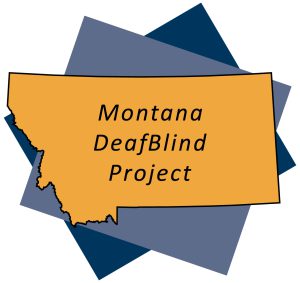
This initiative supports the use of high quality practices across the entire spectrum of children with DeafBlindness. Please see below for strategies that enhance assessment, IEP development, and literacy instruction for children with combined hearing and vision loss.
Assessment
- Communication Matrix
- Informal Functional Hearing Evaluation– Texas School for the Blind and Visually Impaired
- Assessing Communication and Learning
- Sensory Functional Assessment
- Technical Assistance Checklist for Supports Students with Sensory Loss across Educational Settings
- HomeTalk: A Family Assessment of Children who are Deafblind (PDF)
Planning
- NCDB Resources for Personnel Preparation Coursework
- IEP Development Resources- NCDB resources for IEP planning, modifications, meeting checklists and quality indicators
- Tips for Students with Usher Syndrome
- IEP Meeting Checklist for Parents of Children with DeafBlindness
- Issues in Deafness: When the IEP is Aligned with the General Curriculum
- Standards-Based Individualized Education Program Examples (PDF)
- The Center for Appropriate Dispute Resolution in Special Education– Engaging in Productive Partnerships
Instruction
The National Center on DeafBlindness host a comprehensive library on selected topics such as Communication and Learning and Instruction. Please contact Montana DeafBlind Project if you can’t find what you’re looking for, and we can help direct you to additional information and resources.
- Literacy for Children with Combined Vision and Hearing Loss
- Communication Supports Inventory for Children and Youth
- Center for Literacy and Disability Studies: DeafBlind Model Classroom
- Getting Started with Object Communication (PDF)
- Strategies for Working with Children with Cortical Visual Impairment
- Teaching Strategies Specific to Children Who are DeafBlind
Interveners and Ensuring Access
The National Center on DeafBlindness, through data collection activities, defines Interveners, as individuals who provide access to information and communication and facilitate the development of social and emotional well-being for children who are DeafBlind. In educational* environments, intervener services are provided by an individual, typically a paraeducator, who has received specialized training in DeafBlindness and the process of intervention. An intervener provides consistent one-to-one support to a student who is DeafBlind (age 3 through 21) throughout the instructional day.
Working under the guidance and direction of a student’s classroom teacher or another individual responsible for ensuring the implementation of the student’s IEP, an intervener’s primary roles are to):
- provide consistent access to instruction and environmental information that is usually gained by typical students through vision and hearing, but that is unavailable or incomplete to an individual who is DeafBlind;
- provide access to and/or assist in the development and use of receptive and expressive communication skills;
- facilitate the development and maintenance of trusting, interactive relationships that promote social and emotional well-being;
- provide support to help a student form relationships with others and increase social connections and participation in activities.
Want to learn more? Below are additional NCDB resources on interveners
- Comparison of Possible Supports for Students Who Are DeafBlind
- Are Intervener Services Appropriate for Your Student with DeafBlindness? An IEP Team Discussion Guide
- The Intervener in Early Intervention and Educational Settings for Children and Youth with Deafblindness
- The Role of Interveners in Educational Settings Accessibility Document (from OHOA learning modules)


